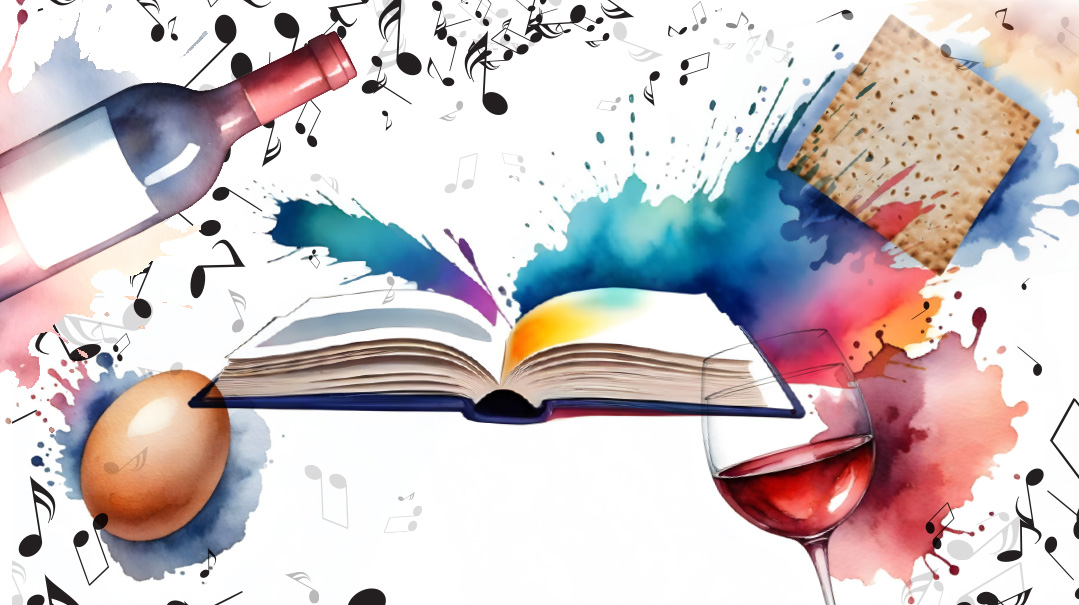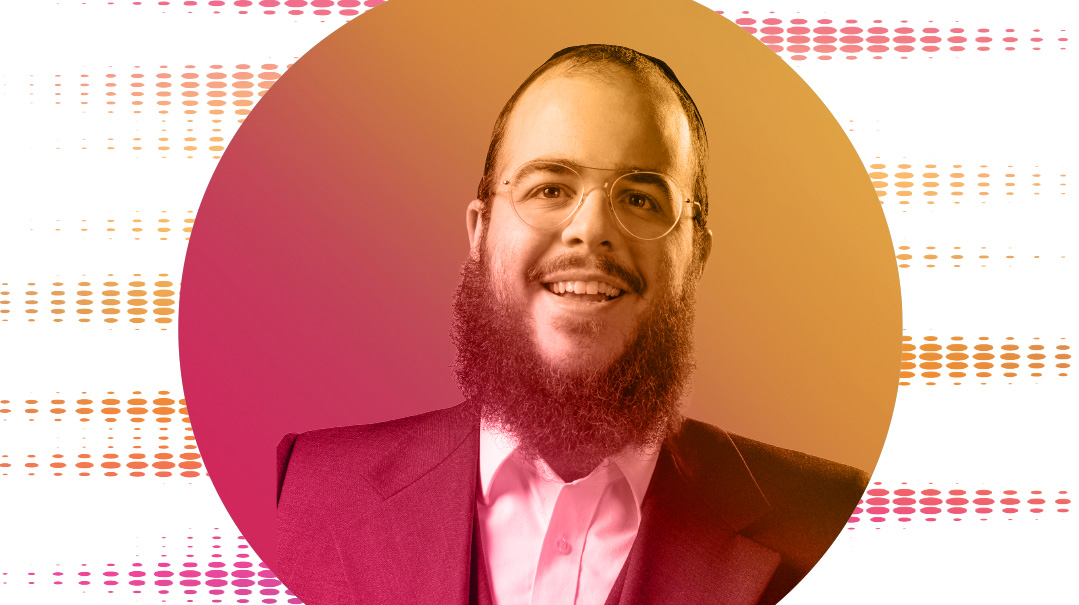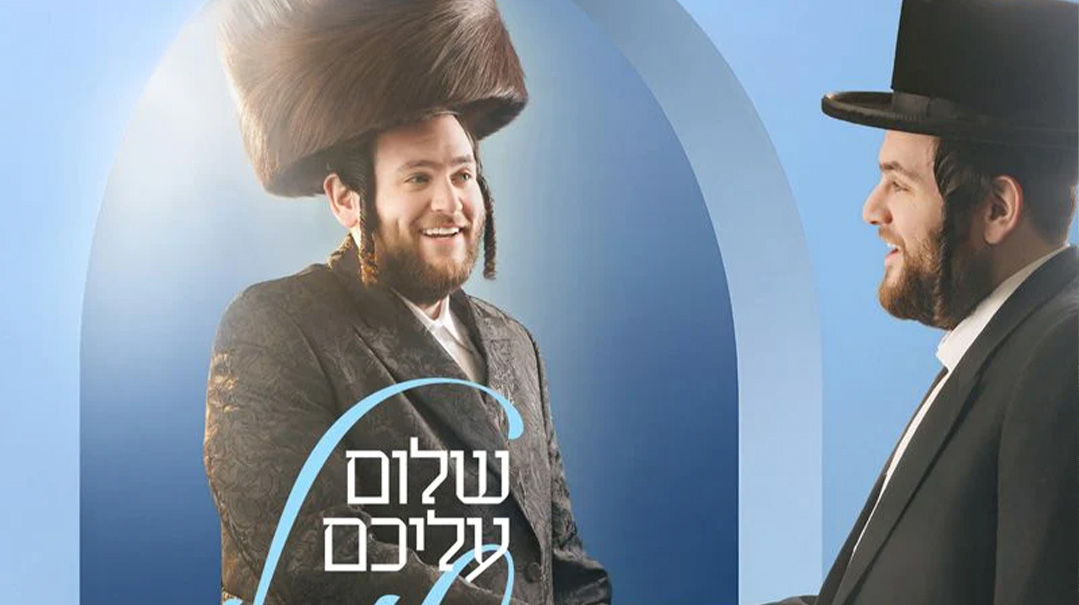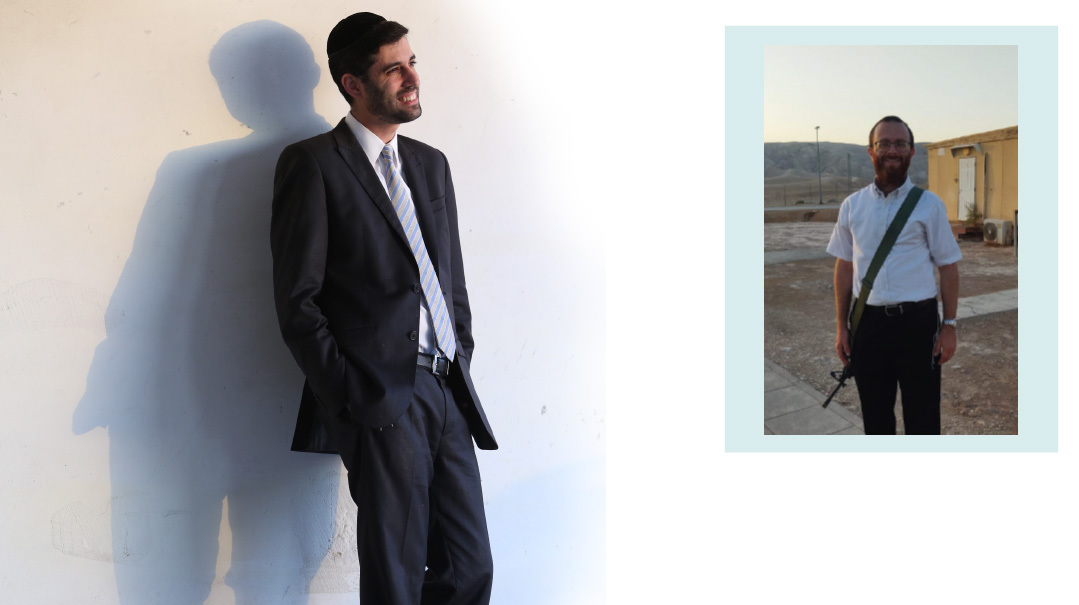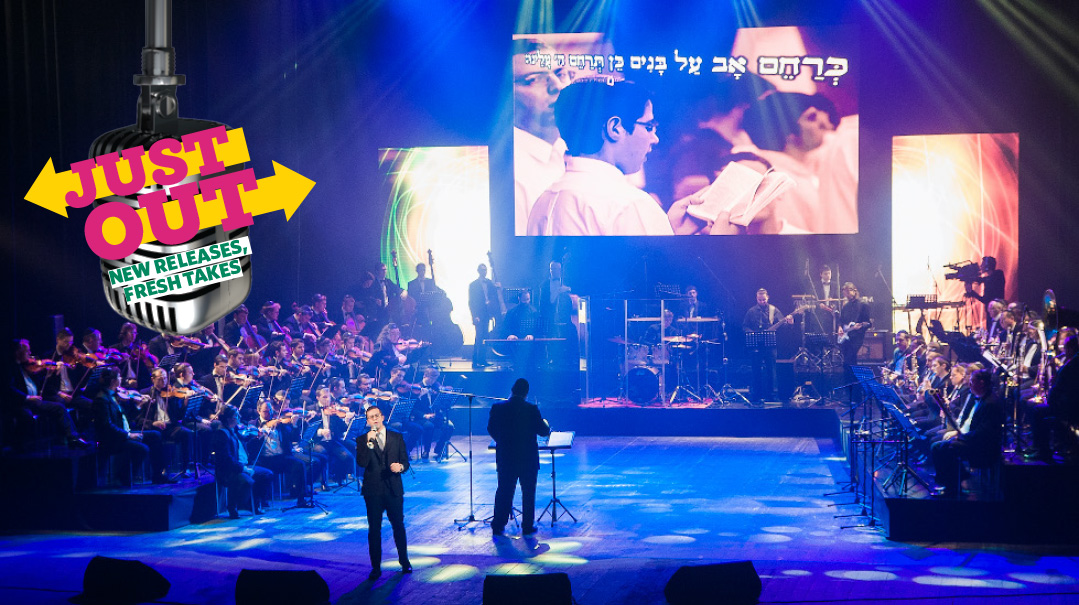Mood Mix with Avromi Freilich
| September 13, 2022I feel an immense responsibility to understand the davening as much as possible, and to daven in a way that awakens souls
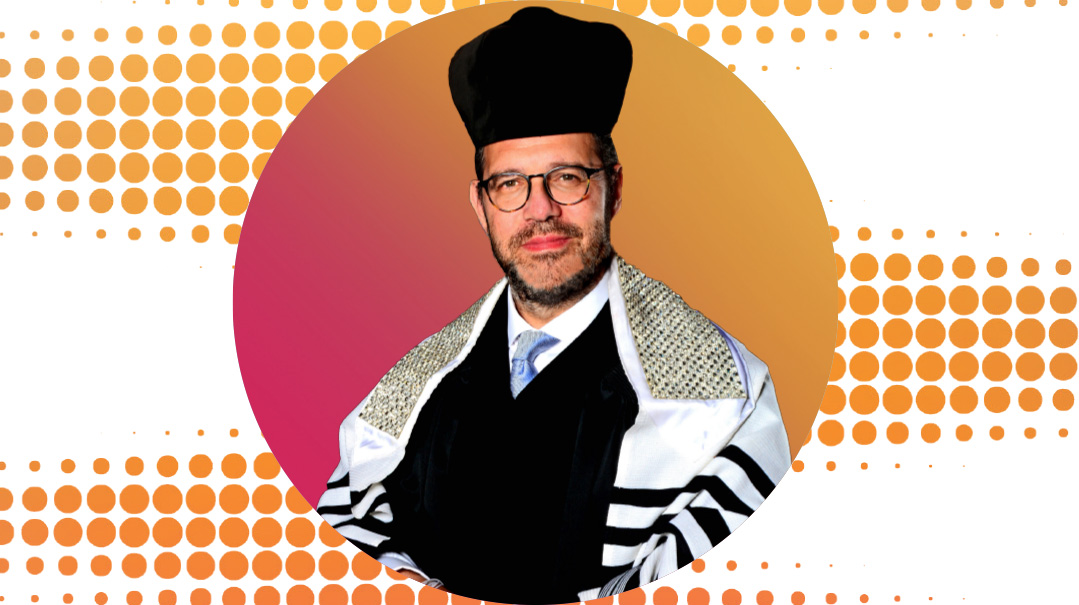
For the past 30 years, AVROMI FREILICH has been the popular, effervescent chazzan of the Hampstead Garden Suburb United Synagogue (also known as Norrice Lea Shul) in London. It happens that nusach is in his genes: His father, Rabbi Joseph Freilich a”h, was an inspiring baal tefillah, his brothers are baalei tefillah around the world, and this year for the first time, his son is leading the davening in another London shul. In addition to leading his congregation in the davening, Chazzan Freilich and his dynamic wife, Rochelle, a psychotherapist — known for their warmth and friendliness — are at the heart of Norrice Lea’s community life.
MY DAVENING PLACE
At the HGSS shul where I’m the chazzan, although shul attendance is not what it was pre-Covid, it is building up again, and we’re expecting 2,500 people coming through our doors for the Yamim Noraim. The main shul holds a thousand, and we have around seven types of services running in our building this season, such as the “overflow minyan,” the “young professionals minyan,” and the Sephardi services, as well as hundreds of children attending children’s services. I’m privileged to be working alongside our exceptional new rav, Rabbi Marc Levene, who has just joined us this year.
MY BIGGEST CHAZZANUS CHALLENGE
The mental strain of being in top form all the time, coupled with the physical strain. I live a couple miles away from my shul and I daven there both morning and evening, so the entire season involves a lot of walking, and a lot of long, intense davening, greeting hundreds of people, and sometimes fasting. But the energy of davening with 1,000 people davening and singing along is the wind in my sails.
WHEN I START PREPARING FOR YOM TOV
I begin to think about the Yamim Noraim davening during the Three Weeks. During Elul, I make sure to set aside a day to drive down to the sea, because the water energizes and inspires me. I take along my machzor and refresh my understanding of the words and the tefillos. Since I lead the davening in a congregation where not everyone knows the meaning of the tefillos or understands the gravitas of the holy days, I feel an immense responsibility to understand the davening as much as possible, and to daven in a way that awakens souls, inspiring people to look over into the English and absorb the meaning of the words. It’s a privilege and a responsibility.
A NIGGUN THAT ALWAYS ENGAGES THE CROWD
Our shul is a very Anglo congregation, and we daven in what’s known as “Nusach Anglia,” which has been used in this part of the world for a few generations. There are those snippets of nusach throughout the repetition of the Shemoneh Esreh where everyone joins along, like the repeated word “Ve-ne-e-mar,” where the chazan gives that musical touch and the crowd chorus it together. Then there are the traditionally-sung parts, such as “simchah le’artzecha vesasson le’irecha,” “zochreinu lechaim” and “veyeida kol po’ul.” I’ve been davening in my shul for 30 years, and this is a place known for congregational singing — everybody knows how and when to daven along, and waits for the chance to do so.
MY FAVORITE PIECE OF CHAZZANUS
Pierre Pinchik’s “Raza D’Shabbos,” because for me that encapsulates the transition between weekday and Shabbos, when, as the beauty and blessing of Shabbos falls, the chazzan really comes into his own to inspire the davening in shul. Personally, I’ve always liked the Kaliver Rebbe’s “Atah Chonein,” and also would often sing Chazzan Moshe Stern’s “Sim Shalom.” Moshe Stern was very creative in intertwining cantorial pieces with a melody that people could catch onto and join, which helps make chazzanus more palatable and singable.
HOW I’VE ADAPTED
Since Covid, there is definitely less patience to sit in shul. We have learned that some parts of davening can be said more quickly. Encouraging people to come back to shul might involve slightly shorter services, with more singing, and more inclusion.
MY MAIN JOB AS A CHAZZAN
As it says in the pre-Mussaf “Hineni” prayer, the ideal chazzan is “me’urav... im habriyos” — well-liked by people. My role as chazzan in the community here includes a pastoral role as well. Because I’ve been here for 30 years, I’ve shared in the simchahs and bereavements of most member families. It’s heartwarming to teach a boy for his bar mitzvah and then years later, to sing at his chuppah. I’m with them almost every Shabbos and every Yom Tov, and they know every tune and wait for it.
MY FAMILY’S YOM TOV SEUDAH SONGS
A Yom Tov morning can be a six-hour affair, from warming up my voice and walking to shul to shaking everybody’s hands after davening and walking home. I have given most of what I have, and have very little energy to sing after that. But my father, Rabbi Joe Freilich, always told me that I have to save a bit of energy to sing with my own children at home, and because I promised him I would, we sing a little, some zemiros or songs.
ONE THING I’LL NEVER CHANGE
The traditional Anglo nusach. In my shul, no one is looking for new tunes at this time of year, nor do people know the latest chassidic songs to want to sing them in davening. They come to shul to hear the meaningful nusach and tunes that we all sing once a year. They are especially waiting for “Vechol Ma’aminim,”“Areshes sefaseinu,” and the final Avinu Malkeinu (“chaneinu ve’aneinu”) to name a few. I would never let them down.
A NIGGUN THAT TAKES ME BACK TO YOM TOV OF MY CHILDHOOD
The avodah section of Yom Kippur. We davened in “Munks,” Golders Green Beis Hamedrash, and the children used to walk down the aisle to the front of the shul to watch Chazzan Meir Lev fall down, with two men supporting him, and complete the section on the floor, invariably crying.
SOMETHING NEW FOR THE NEW YEAR
Well, everything is new! It’s Rosh Hashanah, a completely new beginning, when life hangs in the balance and nothing we have or lack should be taken for granted. But nusach-wise? No changes.
A CHAZZAN WHO MOST INFLUENCED ME
I was raised with the davening of Chazzan Meir Lev, which left a great impression. As a child I played the records of Chazzan Simon Hass for hours on end, imitating the nusach and the voice. As a young chazzan, I was guided and taught by Cantor Moshe Schulhof of Miami, and also learned a lot from Chazzan Shmuel Malavsky. What those three have in common is what’s known as a “chazzanishe mohl.” In the world of chazzanus, they were “zoggers” rather than singers — using nusach that stirs the soul rather than singing — hartzige chazzanim rather than performers.
(Originally featured in Mishpacha, Issue 928)
Oops! We could not locate your form.

